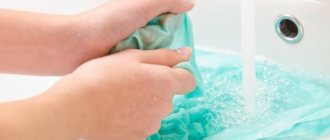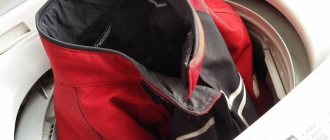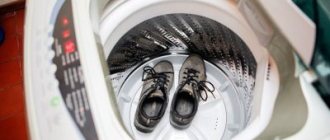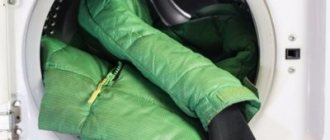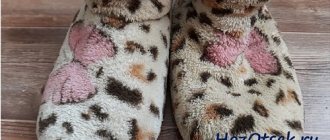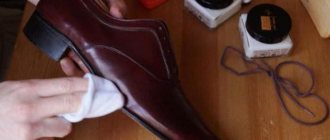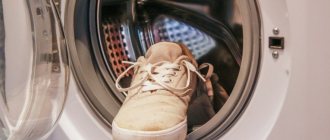The following liquid and gel detergents are recommended for washing in automatic washing machines: Flat, Selena, Dr. Beckman, Unicum and Cashmere. The optimum temperature is up to 40°C, and the washing temperature should be set for delicates, delicates, wool, silk and delicate fabrics. He hangs curtains on delicate fabrics without waiting for them to dry, and dries heavy curtains without twisting them, away from sunlight and heat. Use salt, baking soda and laundry soap to remove stains.
How often should curtains be washed?
How often you should wash your curtains depends on the occasion. Location is also important.
Wet cleaning of curtains in the kitchen should be done most frequently. They get dirty very quickly, and in addition to dust, fatty deposits accumulate in them. Therefore, kitchen curtains should be washed when they become dirty.
Curtains in other rooms should not be machine washed too often. Two washes per year is enough. The rest of the time, it is better to dry clean them to avoid the appearance of pests (for example, mites like to live in dusty places). To do this, you need to dry the curtains well, rub them through them and ventilate them.
On a note! Roller blinds can be vacuumed between washes.
However, if you do need to clean your curtains or drapes, make sure they are machine washable and read the cleaning instructions before putting them in the washing machine.
Linen
This structure, although rough, is quite finicky. If the model is made of pure linen, then the hostess will immediately note that a touch is enough for wrinkled places to remain on the surface.
They cannot be avoided when washing, so it is important not to cause more harm.
- Many people use the normal mode in the machine, but it is better to use the delicate mode;
- Set the temperature to no more than 40;
- Set the minimum spin.
Of course, it will take longer to dry, but this will save you from unnecessary smoothing processes. Before hanging, shake well and iron on the dryer.
But you shouldn’t dry it completely. It should be hung slightly damp; under its weight it will take the required shape and the surface will be smooth.
Which curtains are contraindicated for machine washing?
Chintz tulle is difficult to machine wash. It's best to wash your hands. Water for washing at room temperature should be slightly salted, and when rinsing, add table vinegar.
If your washing machine doesn't have wool, wash it by hand in 30°C water. Use only liquids and gels, avoiding loose powders.
Taffeta and nylon are too thin and delicate materials - the machine may break down, so it is better to prefer hand washing.
You can wash your blinds at home, but never in the washing machine.
If the type of fabric is unknown and cannot be determined, it is better not to machine them to avoid unpleasant consequences.
How to bleach old yellowed tulle
To bleach old curtains that are too dirty, you need to select a method depending on the type of fabric.
If the fabric is made of natural fibers, then boiling is suitable for bleaching. The curtains are first soaked in a solution of laundry soap for several hours. The dirtiest places are additionally soaped. Various substances are also suitable for soaking before washing: salt, soda, boric acid, potassium permanganate.
The main wash can be done twice, changing the water. Powders, bleaches, salt, soda and their combinations are used for washing. After washing, the result is fixed with one of the following agents: starch, brilliant green, blue, ammonia, peroxide or citric acid. After exposure to the composition of these substances, the curtains are rinsed. One such cycle should be enough to return the tulle to a decent appearance.
Types of funds
To avoid damaging the curtains when washing, choose the appropriate type of detergent.
| No. | Name | Photo | Cost, rub. |
| 1. | Liquid detergent for delicate washing of curtains (blinds) and tulle Flat 0.5 l | 110–150 | |
| 2. | Selena for washing curtains and drapes 0.25 g | 110–150 | |
| 2. | Selena for washing curtains and drapes 0.25 g | 120–150 | |
| 3. | Shampoo for washing curtains Dr. Beckman 0.5 l | 130–180 | |
| 4. | Gel for washing tulle and curtains Unicum 0.75 l | 130–180 | |
| 4. | Gel for washing tulle and curtains Unicum 0.75 l | 170–200 | |
| 5. | Washing powder booster “Super white tulle plus” from Frau Schmidt in tablets (2 pcs.) | 80–100 | |
| 6. | Heitmann curtain detergent in sachets (5 pcs.) | 80–100 | |
| 6. | Heitmann curtain detergent in sachets (5 pcs.) | 280–300 | |
| 7. | Elixir for tulle and curtains “Cashmere” 0.3 g | 50–80 rub. |
Silk, organza
These materials are very thin and delicate, and they require the same treatment.
The advantage of such things is that very thin fabric is easy to wash; if there are no visible stains or other contaminants, you don’t even need to use powder, all the dust will go away just like that.
But the disadvantages include deformation, which can occur as a result of high water temperature, spinning, or from contact with other things. The washing rules are as follows:
- There should be no other things in the machine;
- Temperature up to 30;
- “Delicate” mode;
- It is better to pack the curtains in a bag, of course, which is not painted, then the risk of damage to the drum is eliminated;
- The procedure is carried out without spinning.
These items dry fairly quickly, but they will need enough space to dry unrolled and flattened.
Should be hung slightly damp, do not wait for complete drying.
Sequence of steps when washing in a machine
Pay attention to preparing curtains for washing.
Make sure that the weight of the impregnated fabric does not exceed the maximum permissible weight of the device.
If eyelet curtains are to be washed, do not remove the accessories. Manufacturers often make them from high-quality raw materials, so they can withstand loads. But protect the surface of the drum by placing the item in a wash bag. After completing the “water treatment”, the curtains should be removed immediately so that the loops do not fade.
Important: if the cup is made of inexpensive plastic, remove the rings before washing.
Before washing blinds made from popular threads, make separate tight bundles of loose threads to make them easier to undo later. Place the curtain in a laundry bag or pillowcase to prevent the threads from getting tangled during washing.
Curtains with decorative accessories can also be washed in a bag.
Before loading into the machine, fold your clothes carefully to prevent the curtains from constantly folding.
We present the program
Select the most suitable washing programs: Hand wash, Delicate wash, Delicate wash, Wool, Silk, Delicates - examples of suitable washing programs in washing machines from various manufacturers.
Optimal temperature conditions
No type of fabric can damage temperatures of 30-35 °C.
Thick curtains are the least demanding. They can be washed in any wash cycle, at any temperature and with any detergent.
Nuances for models with decor
Cleaning straight-shaped curtains without decorative elements will not be difficult, which cannot be said about models with complex designs.
Curtains with hooks
Be sure to remove the metal hooks - then determine what fabric the curtains are made of and follow the recommendations.
Plastic hangers can be left on the belt, the main thing is to close each one before loading it into the drum.
Curtains with eyelets
Metal eyelets, unlike hooks, cannot be removed - so in order to protect the curtain rings and the machine drum from scratches and damage, load the curtains into a spacious mesh bag.
Proper drying
For some housewives, light curtains do not dry, and immediately after washing they are hung on the window - they spread out under its weight, so there is no need to iron them.
Many housewives do not dry curtains, but immediately hang them on the window.
But in some cases you can’t do without drying. Firstly, there are several prohibitions:
- do not use an electric dryer,
- do not dry in direct sunlight or near heat sources,
- don't squeeze.
Let's move on to the drying process:
- After washing, straighten the curtains and hang them over the bathtub to drain water.
- Hang the dry but still damp product on the curtain rod hooks to dry.
- Light creases as it dries over the next 2-3 days.
Tip: If wrinkles remain, spray the curtain with plain water using a hand sprayer.
When drying outdoors, hang the item on several abrasive lines at the same time to avoid a clear crease line.
Velvet and velor are the most difficult fabrics to dry. After washing, wrap them in a towel or terry cloth and gently squeeze to remove excess moisture. Only then hang the curtains to dry.
Curtains that are too wrinkled should still be ironed.
Scheme for cleaning curtains at home
Washing hailstones at home is possible in two ways:
- machine version;
- soaking and hand washing.
And regardless of the method you choose, be sure to follow the following rules:
- Shake the fabric to remove any layer of dust. This can be done both on the balcony and on the street.
- Soak the textiles in cool liquid, adding washing powder.
- After any type of cleaning, you need to rinse the laundry thoroughly.
- After washing, do not wring out the fabric, let the liquid drain freely.
Ironing methods
The method of ironing the curtain after washing will depend on the material from which it is made:
- Iron the back of the curtains while they are still damp.
- When smoothing the seams, place gauze or a small piece of fabric between them and the fabric.
- Cotton and linen can be ironed using a high temperature iron.
- Velor and velvet can only be ironed dry and on the wrong side of the fabric, making sure that there is no steam on the iron.
- Synthetics and silk must be completely dry before ironing. These blinds are ironed on the reverse side of the fabric with minimal heat from the iron.
Whiteness and oxygen bleaches
You can wash curtains that were recently purchased using bleach or more modern oxygen bleaches. When washing using these products, you should follow the above tips and recommendations left by the manufacturer on the packaging of household chemicals.
These products give good results and do not require much time to achieve them. But they also have significant drawbacks.
Photo curtains
Curtains with photo printing will be an interesting element of room decor; they are more difficult to match to the interior, because in most cases they are not monochrome, but have a colored pattern:
White contains chlorine, which significantly thins the fabric. Therefore, after several uses, the curtains may tear from any careless movement. An equally significant disadvantage of whiteness is that after the second wash using it, the color of the material will not be white, but slightly yellowish.
More modern bleaches will give the same result. Despite the high cost, you can expect excellent results from them only with the first or, at most, second use.
Back to contents
Practical recommendations for removing contaminants
Kitchen blinds are the most susceptible to staining. But in homes where children live, it’s not just the curtains in the dining room that suffer from children’s hands. As soon as you notice a stain, begin removing it immediately. Getting rid of a fresh stain is much easier than dealing with old stains.
A new grease stain on tulle can be removed using dish soap. Apply it to the stain, wait a few hours and wash everything off.
An excellent way to combat stains is a concentrated soap solution for washing:
- Dissolve a quarter of a piece of grated or finely chopped laundry soap in 5 liters of water.
- Leave the curtains in the prepared liquid.
- Wash off after 3-5 hours.
Table salt has also proven to be an excellent way to combat various stains. Dissolve 1 tablespoon in 5 liters of water and place curtains in the solution for 2-4 hours. Rinse under running cool water. Let dry.
Grease and yellowing can be treated well with a baking soda solution. Dissolve 50 g of washing powder and a tablespoon of baking soda in 5 liters of water. Soak the tulle for 20-25 minutes. Wash it.
There are even more folk ways to whiten tulle.
Oxygen-free chlorine-free bleach can be used:
- OxyCrystal;
- "Bos";
- "Persol";
- "Ecostar";
- Flat;
- "Big Wash".
Preparation
The preparatory stage is very important and the final result also depends on it. To begin with, the curtains should be shaken well (it is better to do this outside) to remove all accumulated dust. Canvases with eyelets must not be shaken out, so you can use a vacuum cleaner. Be sure to inspect the curtains for stains and heavy dirt. If they are, move on to the next stage.
Washing items with stains or traces of grease cannot be done without soaking. Add a suitable product to a bowl of cool or warm water and leave for 30-60 minutes. It is not advisable to rub them, otherwise there is a risk of damaging the fabric fibers. You can raise and lower the curtains into the basin several times to create foam. All that remains is to rinse the curtains in clean water and proceed to the main stage.
Useful tips
There are several techniques that will help you achieve maximum cleaning effect:
- Do not wash curtains together with curtains or other items.
- Use the Extra Rinse function, especially if you are using regular granular powder.
- If the curtains have not been washed in several years and are very dirty, soak them first.
- When using detergent, make sure you read the instructions for use.
- For best cleaning, make sure the drum is only half full.
Velvet
A very capricious fabric, which, if not properly cared for, immediately loses its texture and becomes deformed. If the curtains are like this, the best thing to do is to have them dry cleaned.
This may not save money on maintenance, but at least you won’t have to buy a new product.
The thing is that the delicate pile does not tolerate long contact with water, it immediately deforms, the structure itself is also capable of stretching, so spinning is out of the question.
If you still have to wash it yourself, it is better to refuse the machine. At least some housewives still practice this method.
- It should be placed in a bath, water no more than 30, turn the fabric out so that the pile is in the middle.
- When washing, you should not wrinkle or rinse vigorously; everything should be gentle and careful. Also, when squeezing, there are no tourniquets as with ordinary things.
- Next, another point is drying. Here you will need a large vertical surface so that you can spread them out. There should be no folds, as they will leave bald spots.
- A blanket or sheet is placed under the fabric so that it can absorb water; it must be changed periodically. Hang slightly damp.
What's better
Typically, lightweight curtains made of synthetics or mixed materials are washed at home. Very heavy curtains made of velvet or brocade or very thin silk curtains, as well as those with decorative ornaments, embroidery, and those whose composition you do not know, are best left to specialists.
When it comes to choosing between hand and machine wash, it’s difficult to say which is better. Much depends on your physical capabilities - not every housewife will be able to wash pieces of fabric of such volume.
One thing is certain - washing should be gentle. It is more convenient to wash and soak by hand directly in the bath. In the case of machine washing, it is necessary to take into account both the degree of swelling of the material and the weight of the curtains when wet, so as not to damage the equipment.
